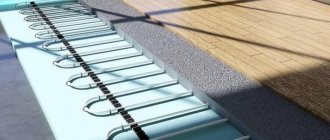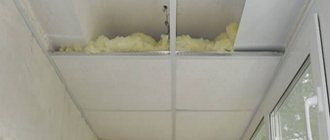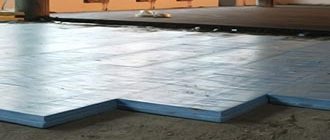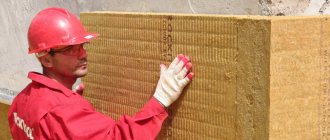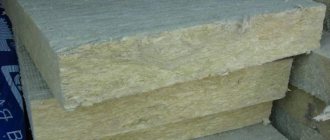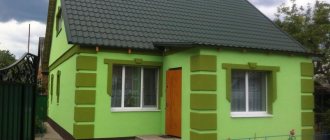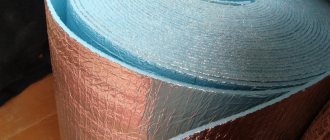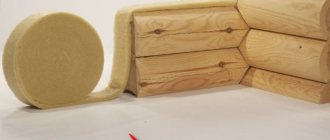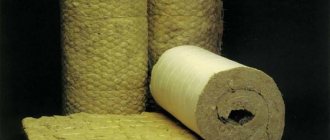Video about an energy efficient house
Mineral wool is used as a thermal insulation layer by both professional builders and individuals when constructing their own houses. It is a material made from fibers of metal slag and molten rocks.
Its distinctive features are good heat-saving characteristics, easy and quick installation, versatility of use, and fire safety. It is for these qualities that builders love mineral wool so much. To choose the type of mineral wool suitable for insulation, you should determine its density.
What is the density of mineral wool
This indicator characterizes the number of fibers per 1 m3 of material. The density of mineral wool varies from 30 to 300 kg/m3, which directly affects its price. The denser the mineral wool, the more expensive it is. There is a greater amount of fiber per cubic meter of high-density mineral wool, which affects the consumption of raw materials. That is why manufacturers increase the price.
Technical characteristics related to mineral wool density:
- Resistance to loads. The denser the cotton wool, the more physical stress it can withstand. This rule does not apply to reinforced varieties.
- Preservation of the original shape during operation. The denser the layers of mineral wool, the better they retain their original appearance.
- Compression resistance force. The lower the density of the material, the more it is pressed. Mechanical impact on the thermal insulation layer involves the use of high-density mineral wool.

Many people believe that the denser the mineral wool, the thicker its layer. In fact, all sheets are the same thickness, only the number of fibers in each of them is different.
Also, the density of the material does not affect such indicators as:
- Vapor barrier
- Thermal insulation
- Soundproofing
Thermal insulation density of different types
The effectiveness of using a particular thermal insulation material is determined more by its structure than by the thickness of the layer being laid (as people who are not entirely competent in the construction and repair industry believe). The correct choice of insulation largely depends on knowing not only its density, but also what this parameter influences in specific conditions. A rational approach to purchasing products from this group allows, in some cases, to significantly simplify the technology of work and reduce the final price. The density of thermal insulation (as well as any other) is measured in kg/m3. Therefore, below are only numerical designations of this characteristic.

It is not entirely correct to look for a direct connection between parameters such as density and thermal conductivity. The structure of the material itself is of great importance. For example, if for basalt wool the dependence of the indicated characteristics is observed, then this cannot be said for polystyrene foam boards. The level of their thermal conductivity remains virtually unchanged, while there is a difference in the strength of modifications of this insulation.
When choosing an option for thermal insulation of structures, you should pay attention to such an indicator of the products used as porosity. It is the degree of concentration of air bubbles in the structure of the sample that directly affects its thermal conductivity. It turns out that buying and installing any insulation does not a priori mean effectively solving the problem of reducing heat loss in a structure.
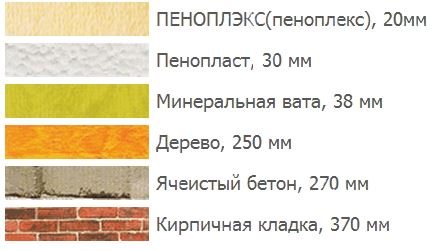
What does density affect?
- Weight.
The very first conclusion that can be drawn is if you remember your physics lessons. Basalt wool does not exert a significant load on structural elements, which is why it is one of the most common and universal insulation materials. Foam concrete, which is often used for thermal insulation, should be used with caution. Its density is about 400, so it is clearly not suitable for frame structures (or other light-weight buildings).
- Estimated layer thickness.
High-density insulation, with rare exceptions, does not provide high-quality thermal insulation. Consequently, material consumption and the final cost of finishing increase.
- Layer strength.
The density of mineral wool insulation is low, so further design of the surface is carried out only with the help of an enclosing structure - sheathing - into the cells of which the samples (rolled, slab, in the form of mats) are placed. And only after this you can do the “finishing” finishing. If you take foam glass, then the strength is quite high, and it can be installed everywhere without any additional protection.
- Quality of sound insulation.
It cannot be said unequivocally that in terms of this indicator basalt wool is worse than expanded polystyrene. Now there are many modifications of products that, with high porosity, provide reliable protection of the building from extraneous noise. For example, Rockwool Light Butts based on stone wool.
- Ease of use.
One of the indicators by which, for example, insulation for a roof is selected is the elasticity of the material. It is easy to place such products in any cell of the sheathing or between the rafters, even if the dimensions do not match. This explains why basalt wool (Izorok, TechnoNIKOL, Rockwool and a number of other brands) is mainly used for thermal insulation of the upper part of buildings. At the same time, slab samples of polystyrene foam are more often used as insulation for walls. They can be attached using the “planting” method with glue, and further finishing can be done including plastering.
Conclusion: buying insulation based only on its strength is not the best solution. It is necessary to study all the characteristics, compare their numerical values, take into account the specifics of installation and take into account the manufacturer’s recommendations. Only an integrated approach to product selection will ensure truly effective thermal insulation of a building.
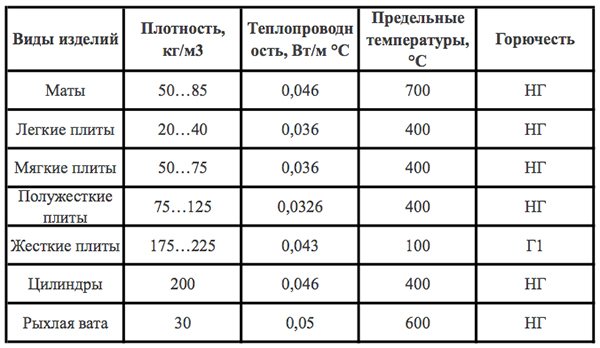
Comparison of insulation materials
1. Foam plastic. As a rule, in the form of polystyrene foam boards. Its density is from 80 to 160. This material is often used where it is necessary to ensure sufficient rigidity of the coating. Options - insulation for walls, floors (under laminate or similar products), less often - for roofing and pipe lines.
2. Mineral wool. They are more versatile in installation, since any structural elements can be finished with insulation with a parameter of 50 - 200 kg/m3. This material based on basalt fibers is available in various modifications. There are options in the form of rolls (up to 15 m), mats and slabs. The feasibility of the purchase is not least determined by the specifics of the installation. The most famous brands are Technonikol, Knauf, Izorok and a number of others.
3. Foamed polyethylene. Mainly for insulating floors (or as a substrate), with a density of up to 25. If for internal walls, then, as a rule, foil-lined samples are used (55±5 kg/m3).
Options such as penoizol and foam glass are used much less frequently in the private sector, and therefore are not discussed in this article. There are recommendations on the Internet on how to choose insulation for facades, roofs, and so on. Such useful advice should not be interpreted unambiguously. They are only of a general nature and do not take into account the particular climate of the region, the base material (and therefore its thermal conductivity), the specifics of installation and a number of other factors. All calculations are made individually, for a specific building or its individual structural part.
Price
| Brand | View | Density | Packaging, m3 | Retail price, rub/pack |
| Penoplex | expanded polystyrene | 28 – 34 | 0,25 | 1 190 |
| TechnoNIKOL | 25 – 30 | 0,27 | 1 240 | |
| stone wool | 30 – 45 | 0,4 | 560 | |
| Isorok | 35 | from 1,340 per m3 | ||
| Rockwool | 37 | 0,29 | 440 | |
| Tepofol | foamed PE | 23 – 30 | roll 1.5 x 1.2 (8 mm) | 1 070 |
Types of mineral wool
The name “mineral wool” combines three varieties. They are distinguished by the raw materials from which the material is produced.
- Glass wool. It is based on fibers up to 50 mm long, their thickness no more than 15 microns. This is the cheapest type of mineral wool. Glass threads give the insulation elasticity and strength. But working with glass wool is inconvenient: it is a fragile material, glass fibers break easily and get on the skin, eyes and respiratory tract. If you install glass wool yourself, be sure to use protective equipment, including glasses.
- Slag-like. Therefore, the hygroscopic material cannot be used in damp rooms, for finishing water and sewer pipes, or for insulating the facade of houses. The material used is blast furnace waste, the fibers are about 16 mm long and no more than 12 microns thick.
- Stone wool. This is the safest material, since the stone threads are strong and do not break. Fiber dimensions – length 16 mm, thickness up to 12 microns.
The difference lies in the density and strength of the material. Also, glass, slag and stone wool have different indicators of hygroscopicity, thermal conductivity, and fire safety.
How to use cotton wool with different densities
Based on density, four main types of mineral wool can be distinguished.
- Mats. Their density reaches 220 kg/m3, thickness - from 20 to 100 mm. The most durable variety, used for industrial purposes. With their help, pipes are insulated and equipment is thermally insulated. Mats are not used for private construction.
When choosing the appropriate type of mineral wool, be sure to consider the information from the manufacturer on the packaging. If you approach the choice of density professionally, then careful calculations are needed to determine the appropriate density of the insulation. In practice, the owners of houses under construction choose the density at their own discretion, based on previous experience, and on the advice of consultants.
| Density, kg/m3 | Scope of application |
| up to 35 | Scope of application horizontal surface without load |
| up to 75 | horizontal and vertical internal surfaces |
| up to 100 | ventilated external walls |
| up to 125 | facades |
| 150 | reinforced concrete floors |
| 175 | load-bearing reinforced concrete structures |
| 200 | under the screed |
When installing a thermal insulation layer made of mineral wool, you must remember about hydro-, vapor barrier and wind protection.
Why do you need insulation density?
The main purpose of insulation is to keep the house warm in winter and cool in the summer heat. To determine the effectiveness of insulation there is a concept: “thermal conductivity”. All materials have thermal conductivity: wood, foam concrete, metal, stone, brick, etc. For us, people living in houses, the best material is one that conducts heat poorly and retains heat in the house, i.e. materials with low thermal conductivity. Stone wool has a lower thermal conductivity coefficient compared to wood, gas silicate or brick.
Why do you need insulation density? Density is the weight in kilograms of 1 cubic meter of measured material. Very dense materials are metals, concrete, monolithic stone - they do not retain heat well and allow cold to pass through easily. Materials with average density are red brick, wood, foam concrete, gas silicate, expanded clay. These materials can protect the house from the cold. For comfortable living in a house, a red brick wall in central Russia should be about a meter thick, but you can replace the brick with basalt fiber insulation with a density of 70÷ 80 kg/m3 and a wall thickness of 150 mm will be sufficient. This is what is done in frame houses. With such a density, the fiber is guaranteed not to sag over time.
Basalt fiber insulation with a lower density, but not less than 40 kg/m3, can be installed in the roof. At lower densities, caking of the material is possible.
So, the greater the weight of 1 meter of cubic basalt insulation, the lower the thermal conductivity coefficient and the insulation retains heat well. But there is no need to increase the density much. At a density of more than 100 kg/m3, thermal conductivity will begin to increase, and the price will be high. Materials with a high density of 140÷180 kg/m3 are used as fire protection, for example in the doors of elevator shafts.
An even denser slab of 180÷220 kg/m3 is used in sandwich panels, when profiled metal sheets are glued to the slab under a press. At this density, the material has good mechanical properties. In modern industrial construction, the construction of workshops for mega-shopping centers and warehouse complexes occupies a leading position and has many advantages in the speed of building construction, fire resistance, etc.
In general, you understand why the density of insulation is needed. But in addition to density, there are concepts of environmental friendliness, durability, resistance to aggressive agents, etc.
Basalt-fiber slabs from Basalt-Most have the best performance, no matter what you compare them with.
Mineral wool for frame house
Frame structures are erected quickly and easily, and mineral wool can be used as a thermal insulation layer. Mineral wool slabs are laid between wooden beams and covered with finishing materials on both sides. The density for the walls of a frame house must be at least 55 kg/m3. During construction, two layers of mineral wool are required. The first is laid directly between the frame beams, the second - from the outside.

For thermal insulation of horizontal surfaces that will not be subject to any load, mineral wool with a density of 35 kg/m3 is sufficient. There is no point in buying denser and heavier varieties; they will only increase the load on the supporting structures.
Mineral wool remains one of the most common insulation materials in construction due to its excellent technical characteristics and attractive cost.
In the video you can see how to insulate a frame house with your own hands using mineral wool. The video clearly demonstrates this method of thermal insulation.
What density of cotton wool can I use?
After reading the information provided by the mineral wool manufacturer, you can select the appropriate density depending on the object, as well as on the compaction coefficient offered by the supplier for purchase:
- With a density of up to 35 kg/m³, the material is used for lightweight surfaces (roof slopes, for example).
- The thickness of mineral wool for walls, interior partitions, ceilings and floors is 75 kg/m³.
- Up to 100 kg/m³ suitable for working with external walls.
- For facade walls, a product with a capacity of 125 kg/m³ is suitable.
- For the bottom layer of insulation of reinforced concrete structures, a density of 150 kg/m³ should be taken.
- The main thermal insulation layer of reinforced concrete structures requires 175 kg/m³.
- For the top covering or floors under the screed, a thickness of mineral wool of 200 kg/m³ is used.
The density of the mineral material you purchase should depend on the type of walls that you plan to insulate, as well as their location (inside or outside).
Return to contents
